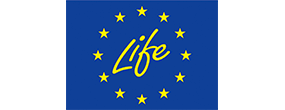Overview
In 2022, the final energy consumption in Montenegro was 0.76 Mtoe, approximatively 18% higher than in 2014 (0.64 Mtoe). Residential sector recorded 6% decrease in total energy consumption since 2014, reaching a share of 33% of total final energy consumption in 2022 (-10 percentage points). Over the same period, transport increased its consumption by 83% with a share reaching 40% (+14 pp) while industry sector decreased its consumption by 33% with a share of 12% in 2022 (-9 pp). In the same period, Services and non-specified increased their consumption by 55%, reaching 14.6% of the total final energy consumption in Montenegro in 2022 (+3 pp). Agriculture only consumes 1% of total final consumption.
Figure 1: Final energy consumption by sector (with climatic corrections)
Source: ODYSSEEBoth, primary and final energy intensity improved in the period from 2010 to 2022. Primary energy intensity decreased by 29%, or 2.9%/year on average, from 0.34 koe/€2015 in 2010 to 0.24 koe/€2015 in 2022. Over the same period final energy intensity decreased by 19% or 1.7%/year from 0.21 koe/€2015 to 0.17 koe/€2015 in 2022.
Figure 2: Primary and final intensities (with climatic corrections)
Source: ODYSSEEFrom 2014 till 2022, final intensity by sector recorded different trends. The largest decrease was recorded in Industry sector (-44% or 5.5% per year), followed by agriculture (25% or 3.1% per year). Over the same period, the service sector recorded an increase in energy intensity by 16% (2% per year).
Figure 3: Final intensity by sector
Source: ODYSSEETotal energy supply in Montenegro, over the period from 2010 to 2022, has decreased by 0.08 Mtoe, from 1.13 Mtoe in 2010 to 1.05 Mtoe in 2022. This reduction in total energy supply took place despite an increase in final consumption (+ 0.04 Mtoe) and was mainly influenced by a decrease in the net consumption of power sector (-0.08 Mtoe), and consumption for other transformations and non-energy uses (-0.02 Mtoe each).
Figure 4: Main drivers of the total energy supply variation
Source: ODYSSEEBuildings
Final energy consumption in building sector (services and households), in Montenegro, has increased slightly over the period from 2014 to 2022, from 0.339 Mtoe in 2014 to 0.361Mtoe in 2022 (with climatic corrections). In this consumption, the residential sector has participated between 79% in 2014 to 74% in 2022.
Figure 5: Final energy consumption in buildings (with climatic corrections)
Source: ODYSSEEOver the period 2017-2022 electricity consumption per dwelling increased by 4%, while the total energy consumption per dwelling decreased by 7%. Main increase in electricity use was recorded from 2020 to 2022 during the Covid crises followed by the energy crises. This may be due to fact that electricity prices stayed at the same level during the energy crisis while prices of other energy sources have significantly increased and most of the people switched to the cheaper option.
Figure 6: Energy and electricity consumption per dwelling (with climatic corrections)
Source: ODYSSEEEnergy consumption per capita for space heating in households (with climatic corrections) has kept at constant level over the period 2017 to 2022 with minor variations (2% for the period or 0.5 per annum on average). From the data set it is evident that energy consumption per capita for space heating in households has slightly decreased mainly due the incentive programs for subvention for implementation energy efficiency measures in households. Number of homeowners recognised these attractive programs that have been offered during this period.
Figure 7: Energy consumption per capita for space heating in households (with climatic corrections)
Source: ODYSSEEIn the structure of energy consumption per capita by end-use in households (except space heating) most of the energy is used for cooking followed by water heating. A slight increase of energy consumption for air cooling can be noticed, 1% for the period 2017-2022, which may be connected with global warming.
Figure 8: Energy consumption per capita by end-use in households (except space heating)
Source: ODYSSEETable 2: Sample of policies and measures implemented in the building sector
| Measures | NECP measures | Description | Expected savings, impact evaluation | More information available |
|---|---|---|---|---|
| Energy Efficiency Home | No | Subventions to cover interest rate and bank transaction charges for the citizens/households for implementation of one or more from the five available measures offered by the project "Energy Efficiency Home". Measures include: installation of energy efficient facade, installation of energy efficient windows, installation of heath pumps, installation of split and multi split systems and installation of heating systems on biomas. | 0.166 PJ/year and reduction by 0,18 kt of CO2 per year. | Link |
Transport
There was an increase in the consumption for transport from 2019 to 2022. The main reasons for this are the start of the COVID at the end of 2019 and the restriction of movement and a slight increase in the population and therefore in vehicles. Rail transport remained at the same level..
Figure 9: Transport energy consumption by mode
Source: ODYSSEEWhen we talk about the transport sector in Montenegro, it is clear that this sector is constantly increasing energy consumption. This is also the result of the increase in the number of inhabitants in Montenegro between the two population censuses 2011-2023 from 621 000 to 633 000 inhabitants. In the previous 5 years, there were several stimulus from the Eco Fund for the purchase of electric and hybrid vehicles, which have not yet produced a visible result. Rail transport is still underdeveloped in Montenegro and is used very little, and from 2011 to 2023 it is at a low and fairly similar level.
Table 3: Sample of policies and measures implemented in the transport sector
| Measures | NECP measures | Description | Expected savings, impact evaluation | More information available |
|---|---|---|---|---|
| Yes | Link |
Industry
The largest consumer branch of industry over the period from 2014-2022 in Montenegro is the "other branches" (mainly hospitality industry-tourism&catering) with a share of 83% of the whole industry final consumption in 2022, followed by non-ferrous which represented 7.5 % of the final energy consumption in 2022. This figure shows that other branches together with services play an important part of the national economy.
Figure 10: Final energy consumption of industry by branch
Source: ODYSSEETable 4: Sample of policies and measures implemented in the industry sector
| Measures | NECP measures | Description | Expected savings, impact evaluation | More information available |
|---|---|---|---|---|
| Solari 500+ | No | Project goal is to provide support for construction of integrated solar power plants through financing and subsidizing users for their purchase and installation of Photovoltaic systems (PV) with the power of up to 30 kW for legal and natural persons, owners of business building. Project was implement and financed by EPCG with 20% of subsidy provided by EKO FOND. | 0,002 PJ/year and 3.87 kt of CO2/year |





